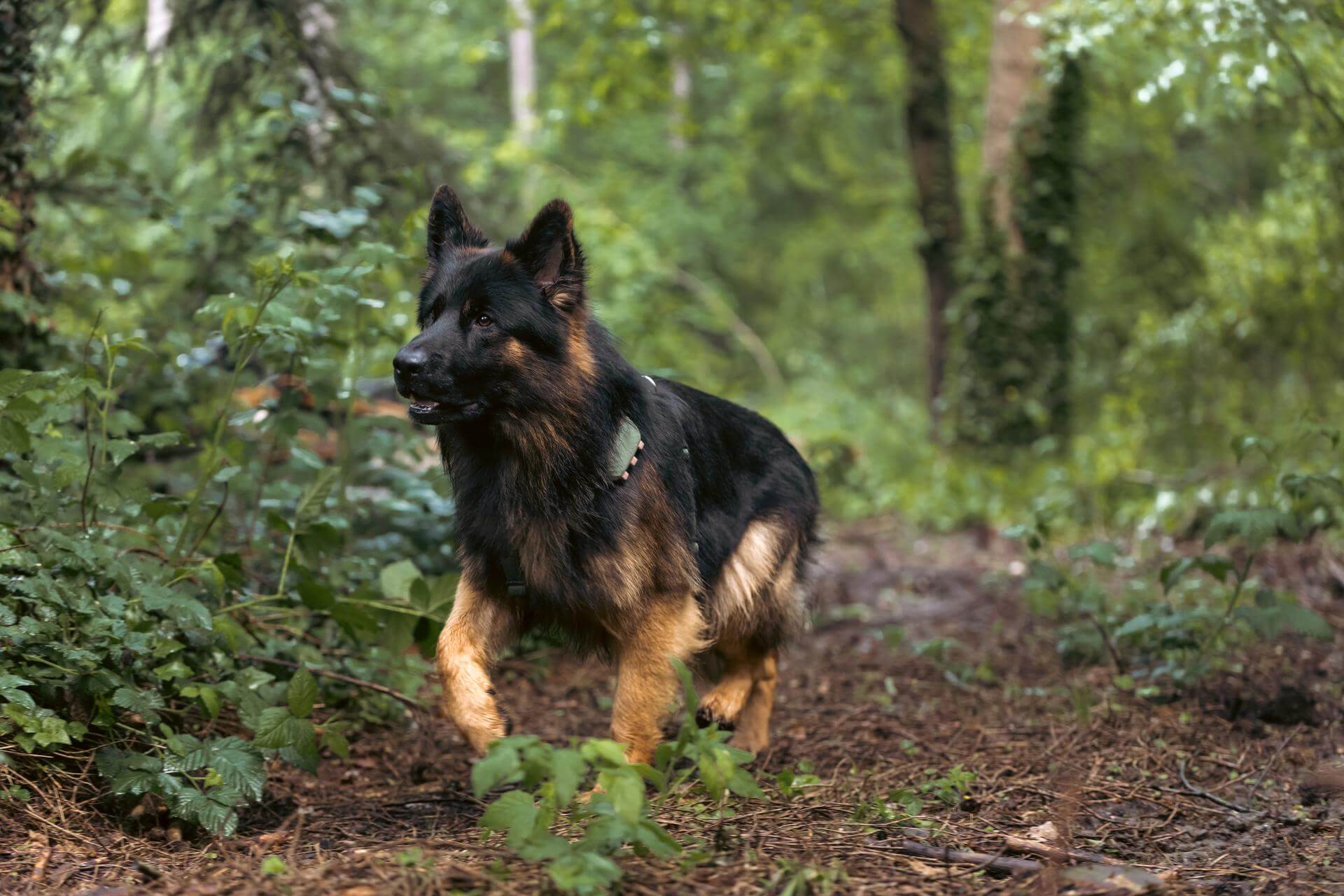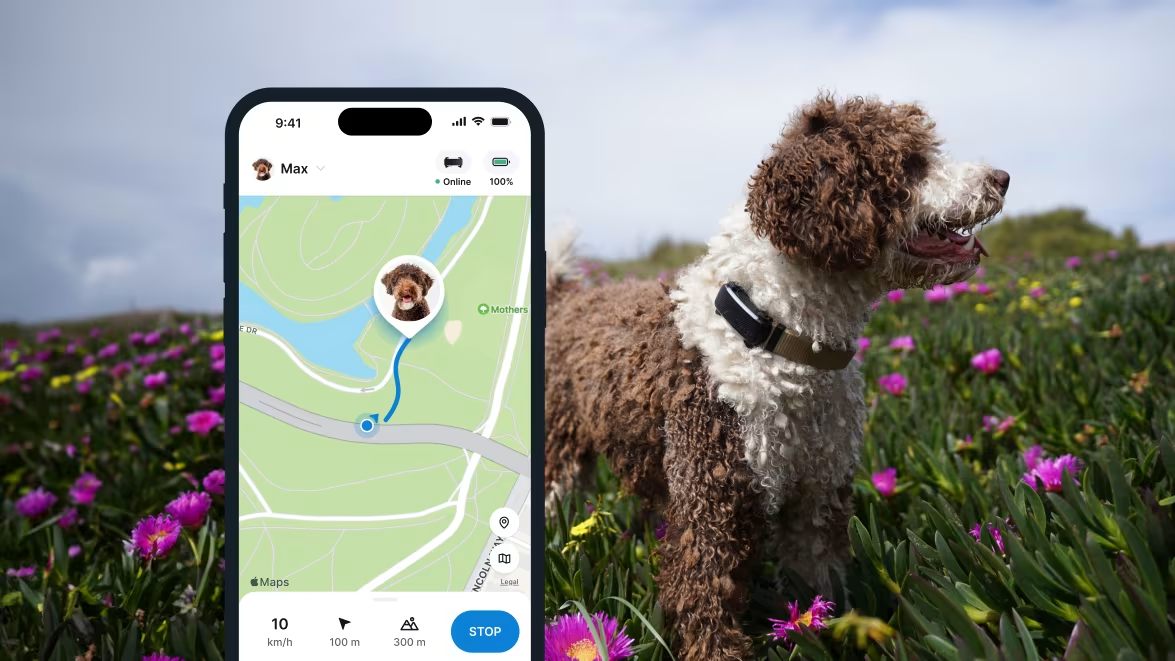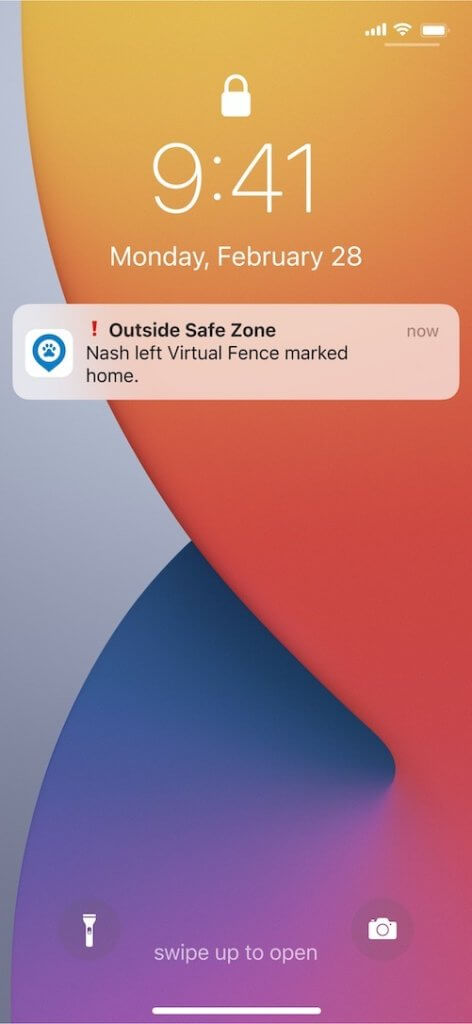Dog Keeps Running Away? 8 Tips To Prevent An Escape
Got an escape artist dog at home? There might be a bunch of reasons behind this behavior. Here are a couple of ways to prevent your buddy from escaping - for good.
Our canine pals run away for all sorts of reasons – but it’s more serious if your dog keeps running away on a monthly, weekly, or even daily basis. Here are some tips on how to keep your dog safe inside your yard or home…and the smartest way to ensure you never lose them again.
Key Takeaways
Dogs run away for various reasons
Common reasons for dogs escaping include fear, anxiety, boredom, a high prey drive, or a strong mating instinct.
You can prevent your dog from running away with a few tweaks
Check your fences and gates, reinforce basic training commands like “Sit” and “Stay,” and make sure your dog gets enough physical and mental stimulation. Spaying or neutering can help reduce the urge to roam for mating purposes.
Use both a microchip AND a smart dog tracker for safety
A microchip can help prevent your dog from being mistaken for a stray. Besides, the Tractive smart dog tracker helps you set up a “safe zone” and receive escape alerts when the dog leaves it. You can also track your dog in real-time in case they do escape too far.

Always know your buddy is healthy & safe
Read moreWhy does my dog keeping running away?
Dogs escape for a variety of reasons. The reasons aren’t 100% clear – but it’s usually a combination of temperament, activity levels, and instincts. But if your dog keeps running away, it could be due to:
- Fear or anxiety
- Boredom
- Prey drive
- Mating instinct
- New territory
- And in some cases, high energy needs – especially puppies
💡 It’s also why dog parents around the world – just like you – are strapping GPS trackers to their runaway buddies’ collars as an emergency measure. With just a glance at your phone, you’ll be able to track their every step in real-time. Or prevent them from escaping by setting up a “safe zone” around your home that sends you an escape alert if they sneak past it.

Follow your dog anywhere
Get real-time location information, wherever they go. And find out when they try to make an escape, or just when they go somewhere they shouldn’t, with Virtual Fences.
8 tips to help if your dog keeps running away
1) Check your fence & gates
Start by inspecting your physical fence for damage. Dogs can squeeze through smaller spaces than you might expect. Look for places where your pooch has dug a hole beneath the fence. Block any holes with lumber or chicken wire to prevent future dog escapes. Your dog may also be stepping on patio furniture or toys to climb up and over the fence. Some very athletic or highly motivated dogs can even jump over a fence! The best way to keep jumpers inside a fenced yard is to extend the height of your fence.
Finally, check the latches on your fence gates. Does the latch click shut when you close the gate behind you? If the gate doesn’t always latch securely, you can bet that the dog knows it and is planning an escape from the yard.
Read More: 15 Dog Fence Ideas For Your Escape Artist Buddy
2) Revisit your dog’s basic training
Your dog’s instincts might override their training from time to time. So it’s a good idea to revisit the most important dog commands like Sit, Stay, or Come.) With a bit of practice and consistency, you can easily avoid the frustration of constant dog escapes. In more serious cases, you could enroll at a dog obedience school with your buddy to learn some dog training techniques together.
Finally, stay mindful of your own behavior. For example, if your dog escapes, do you run after them? If so, your dog may view this as playtime and escape over and over just for fun. Make sure you’re reinforcing your dog’s “good” behaviors with consistent rewards, like when they’re sitting still or staying within boundaries. This will help them learn what you expect of them easier.
Training your dog requires consistency and patience, but the results are worth it. Any time you spend training your dog builds trust between the two of you – while keeping them safe.
3) Avoid punishing your dog for running away
Punishment doesn’t actually address the root cause of why your dog is doing any kind of behavior – all it does is create a negative association with you. (And “home.”) If you punish your dog when they arrive back home, the dog will associate being punished with returning home. As a result, your pup may become afraid of you or your home – and might be less likely to return. Even more so if they’re a newly-adopted dog that doesn’t 100% know or trust you yet.
So unless you catch your dog in the act of escaping, it’s unlikely that punishing them will reduce any runaway behavior. Rather, you’re better off giving your dog extra praise, pets, and treats when they ARE behaving themselves.
4) Watch out for open doors
Watch your doors (including garage doors and yard gates) with any increased foot traffic to your home. At the first sight of an open door or gate, your escape artist dog might attempt to make a run for it. Make sure to put your pup on a secure leash before opening any doors or gates. Pay extra attention commands like Come and Sit while you attach a leash securely to your dog’s collar or harness.
Train your dog to Stay when you open the front door to grab an Amazon package, pick up your Uber Eats, or welcome a guest over. Avoid multitasking when you open a door or gate. Keep your eyes on your dog and watch their behavior.
If backyard escapes continue to happen when you open a fence gate, consider adding an airlock or vestibule to your fence. This system creates double-gated entry and exit from your yard and a safe, enclosed area where you can leash up your dog before heading out.
5) Keep your dog well-exercised
Puppies and adolescent dogs have a ton of energy to spare. By taking your dog for a walk every day, you’ll help them use the excess energy that they might otherwise spend digging, climbing, or jumping the fence.
Daily walks keep your dog in good physical condition and prevent canine obesity, which can threaten your pup’s health and well-being. Walking also helps your dog benefit from the sensory stimulation of the sights, sounds, and smells of the great outdoors. Plus, your dog gets to spend time with their favorite person – you!

6) Watch out for any boredom or anxiety
Just allowing your pup to run free within a fenced yard may not meet all of the dog’s needs. You still need to make your yard interesting and comfortable to reduce your dog’s urge to run off. Because as it turns out, boredom is one of the key reasons why dogs run away. So make sure you add a variety of toys for your pup to play with and change them occasionally. Spend some quality time in the yard interacting with the dog, perhaps for a quick daily training session. Add a rain shelter, access to shade, food, and water and the yard may become your dog’s happy place.
Read more: 10+ Tips For A Fun, Safe Dog-Friendly Backyard
7) Keep an eye out for what spooks your dog
Another reason your dog might make an escape attempt? Loud noises. Dogs tend to have noise anxiety – which is why more dogs go missing around the 4th of July than any other day in the year. So if you can, plan to have your dog indoors when stressful events are likely, such as construction, thunderstorms, or fireworks.
8) Watch out for your dog’s mating instinct
The mating instinct is powerful – and especially so if you haven’t gotten your buddy spayed or neutered. Preventing an intact dog from escaping can be next to impossible if there’s a, well, paw-fect mate in the neighborhood. That’s why it’s best to neuter males or spay females as soon as recommended by your veterinarian. This firstly reduces roaming behavior. Secondly, you’ll help reduce pet overpopulation and decrease the number of unwanted pets that are euthanized each year.
Read more: Dog In Heat? Here’s Everything You Need To Know.
Two vital steps to ensure your runaway dog’s safety
You’ve fixed your fences, fixed your dog, trained them, tired them out…and they’re still escaping? Now’s the time for emergency measures. Specifically, two key steps to ensure max safety the next time they escape.
Get your dog microchipped
First things first, get your dog a microchip ID – so that they’re easy to identify outdoors. They’re a legal requirement in a number of countries around the world, including many US states. So make sure to check your local laws (or those of any country you’re traveling to on vacation.)
Microchips work like a permanent ID tag for your dog. A vet can implant them in under 10 minutes between your dog’s shoulder blades. Plus, you can add your contact details to the microchip database to identify you as your dog’s parent.
Now if your runaway dog makes an escape attempt, a helpful stranger might take them to a nearby vet or local animal shelter. Where they can scan your dog’s microchip, find your contact details, and inform you where to pick your dog up. Because sadly, if a shelter takes in your dog and can’t identify them, your dog might end up being rehomed. Or worse, euthanized.
⚠️ Just remember: a microchip alone can’t prevent your dog from being picked up by a dog thief. (Or just someone who decides to “adopt” your buddy as their own!) Rather, a microchip can only help someone identify your dog – if they scan for it in the first place.
Read more: Dog Tracker Chip: What Are Dog Microchips vs GPS Trackers?
Which is why we’d also recommend you…
Get your dog a GPS tracker
If you’ve got a chronic escapee at home, a dedicated smart dog tracker may be the emergency solution you need – while you continue to train your dog to prevent any runaway attempts. With your trusty Tractive GPS strapped to your dog’s collar, you can set up a “safe zone” around your home or backyard via the mobile app. Your tracker starts monitoring your dog’s movements right away.

⚠️ But the moment your dog tries escaping this “safe zone”…


…you get an escape alert to your phone right away. So you can intervene, bring them back to safety, or even warn your neighbors about a potential “yard invasion” attempt.
Even better, since your Tractive device works with GPS – you can even monitor your safe zones remotely. (Like if you’re in another state – or even while on vacation, if you’re on a Premium subscription.) Or just hit “LIVE” to start tracking your escape artist in real-time right away.



